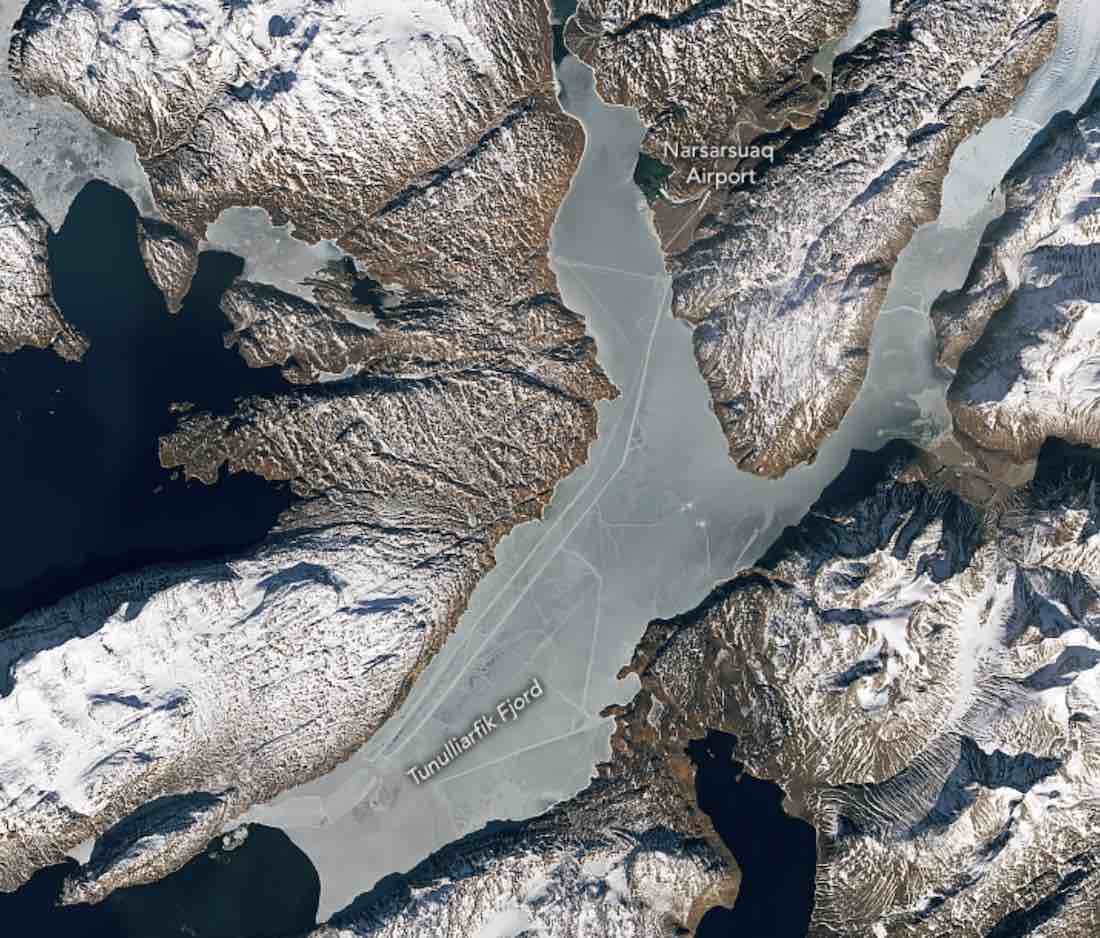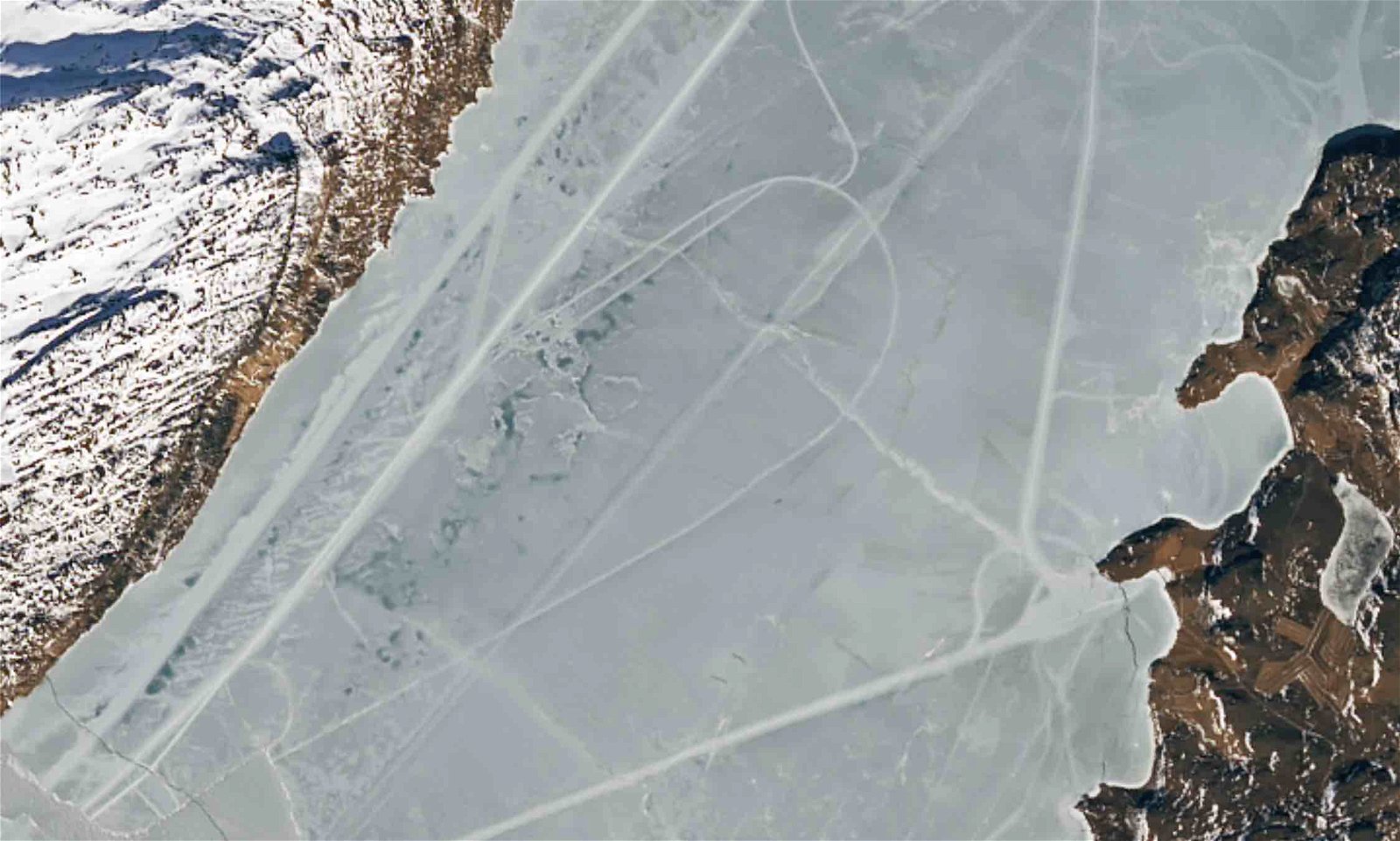As the USGS-operated Landsat 9 Earth observation satellite passed above Greenland on Monday, March 13, 2023, its photosensors trained on the frozen landscape below it detected something unusual: a mysterious series of tracks scoring the icy surface of a remote fjord.
It was a curious sight on Earth’s largest island, whose most defining features are barren tundra and monumental glaciers that cover most of its surface. The imposing natural conditions in Greenland, in other words, leave little room for signs of activity visible from space.
Yet something must have caused the unusual tracks scoring the Tunulliarfik Fjord that appeared in the imagery collected by Landsat 9 in March. What had been their source? Could their underlying cause have been natural, and if so, then what conditions might be responsible?
The unusual features were intriguing enough that they prompted an investigation by scientists with NASA’s Cryospheric Science Laboratory at Goddard Space Flight Center, whose mission is to utilize satellite imagery, along with data collected from surface and aircraft observations, to produce models that help them characterize the processes that govern the behavior of ice and snow.
Among the scientists involved was Nathan T. Kurtz, a specialist in studies of sea ice thickness using satellite and aerial sensors, who began exploring the range of possible causes.
Crevasses do sometimes form in the glaciers that cover most of Greenland. While they most often result from the stress that builds within the massive sheets of ice, occasionally, features deep below the ice in the underlying bedrock can also produce these cracks.
Kurtz admits that some of the lines seen in the Landsat 9 imagery do “look like natural ice deformation features,” which he said are “most likely cracks or ridging due to tidal motion.”


However, some of the lines scoring the Tunulliarfik Fjord were perfectly geometrical and aren’t the kind of features generally recognized as resulting from natural forces acting on the fresh layer of sea ice that covers it this time of the year.
Another clue had been that the unusual marks appeared to originate from the towns of Qassiarsuk and Narsarsuaq, prompting scientists analyzing the imagery to consider whether some of these features couldn’t be an artifact of human origin rather than something natural.
Even more revealing had been the way some of the tracks appeared to display not just straight lines between small population centers along the fjord but also loops in some cases, revealing the likely culprit: vehicles moving across the surface of the ice.
“It seems likely,” Kurtz concluded, “that residents from the town or nearby were out on the ice, possibly hunting or traveling,” moving across the ice in snowmobiles or other vehicles.
Although this might have initially seemed like an unlikely possibility given the dangerous conditions that travel over the fjord might present, it made sense to Kurtz and the scientists at the Cryospheric Science Laboratory since the size of the fjord would also mean that traveling around it by land is far more cumbersome than a straight shot across its surface.
This isn’t the first time unusual things have turned up in Landsat satellite images that have piqued the interest of researchers. A series of unusual stripes observed in images collected by the Landsat 8 satellite along the Markha River in the Central Siberian Plateau also garnered attention from researchers in 2021 for their unique appearance.
In the months ahead, even icy Greenland will eventually warm as summer approaches, enough so that the ice that grips much of the island will release the fjord’s waters, which remain free of ice for a large portion of the year.
Around the same time, as the snow melts throughout the region, the far-less efficient land-based travel will also become the seasonal norm, and for a few months traveling across the fjord will be exclusive to boats and the icebergs that occasionally break free from the northern glacier and drift across its waters.
Micah Hanks is the Editor-in-Chief and Co-Founder of The Debrief. He can be reached by email at micah@thedebrief.org. Follow his work at micahhanks.com and on Twitter: @MicahHanks.

